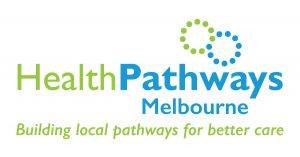
The number of patients presenting with eating disorders has increased during the COVID-19 pandemic.
The usual background rate is quoted as 4 per cent, but some reports have presentations for eating disorders increasing by 25–50 per cent.
Since 1 November 2019 there have been MBS items specifically relating to eating disorder treatment. It is important for GPs to revisit these MBS items now.
Eligible patients with an EDP can receive a Medicare rebate, which will activate:
- a course of evidence-based eating disorder psychological treatment services (up to a total of 40 psychological services in a 12-month period – an initial 10, plus 10 from the GP referral with the possibility of another 10 +10 after a psychiatrist review)
- up to 20 dietetic services, in a 12-month period, depending on their treatment needs.
EDPs have an expiry date
Unlike mental health treatment plans (which can be endlessly reviewed), EDPs have an expiry date exactly 12 months from the date of the original plan. After expiry, a new EDP must be prepared including a new eating disorder examination questionnaire. Simply reviewing the old plan after the 12-month expiry is not enough; your patient will not receive a rebate for their psychology sessions.
A psychiatrist appointment is needed to access the second 10 + 10 psychology appointments
There is currently a reasonably long wait for a psychiatrist review. So, it is worth considering this referral early if you think your patient is likely to need the second 10 + 10 psychology appointments. You could refer to a psychiatrist at the first GP review session (that is, after 10 psychology appointments).
The psychiatry review can occur before the end of the first 20 sessions. There are psychiatry item numbers that must be billed to unlock the second set of 10 + 10 sessions.
Preparing an EDP
The following items must be included in an EDP:
- an opinion on the diagnosis of the patient’s eating disorder
- treatment options and recommendations to manage the patient’s condition for the following 12 months
- an outline of the referral options to allied health professionals for mental health and dietetic services (and referral options to specialists, as appropriate).
Many psychologists prefer the plan is addressed directly to them.
The GP must offer the patient and the patient’s carer (if any, and if the GP considers it appropriate and the patient agrees):
- a copy of the plan
- suitable education about the eating disorder.
Eligibility
There are two cohorts of patients eligible for the EDTP item numbers:
- Patients with a clinical diagnosis of anorexia nervosa.
- Patients who meet the eligibility criteria (see below) and have a clinical diagnosis of any of the following conditions:
- bulimia nervosa
- binge eating disorder
- other specified feeding or eating disorder.
The eligibility criteria for a patient are:
- a person who has been assessed as having an eating disorder examination questionnaire score of three or above
- their condition is characterised by rapid weight loss, or by frequent binge eating or inappropriate compensatory behaviour (three or more occurrences per week); and
- a person who has at least two of the following indicators:
- clinically underweight with a body weight less than 85 per cent of expected weight, where weight loss is directly attributable to the eating disorder
- current or high risk of medical complications due to eating disorder behaviours and symptoms
- serious comorbid medical or psychological conditions significantly impacting on medical or psychological health status with impacts on function
- the person has been admitted to a hospital for an eating disorder in the previous 12 months
- inadequate treatment response to evidence-based eating disorder treatment over the past six months despite active and consistent participation.
Tips for your practice
- I ask all my EDP patients to do the eating disorder examination questionnaire online at Inside Out prior to the appointment, and to email us the result.
- Ensure all clinicians know about the expiry date of the plans. Consider using a reminder for 11 months after the initial creation of the plan to prompt creation of a new one.
- When I prepare an EDP, I tell all of my patients that this will expire in exactly 12 months, and they must arrange to do a new one then.
- Consider a process for psychiatry referrals after the initial 10 psychology sessions, in anticipation of needing to access the second 10 + 10 if required.
- Consider discussing the eligibility criteria at a clinical meeting, and ensure your auto generated templates include the eligibility criteria.
More information
Please visit MBS Online for detailed descriptions of eating disorders items. You can refer to the MBS changes factsheet for the temporary telehealth items. 
Resources for general practice
- New MBS Items for Eating Disorders – Cheat Sheet for GPs – developed by the National Eating Disorders Collaboration.
- EDP template developed by the National Eating Disorders Collaboration (also available to download as a .rtf file)
- More information from the National Eating Disorders Collaboration.
- Butterfly Foundation – the national charity for all Australians impacted by eating disorders and body image issues, and for the families, friends and communities who support them.
- Eating Disorders Victoria – connecting Victorians affected by eating disorders with the services, people and hope they need for recovery.
- The General Practice Mental Health Standards Collaboration has a suite of mental health resources for general practice.
Education
GPs who have completed Mental Health Skills Training are able to claim higher rebates for these new item numbers.
- The RACGP has a list of accredited Mental Health Skills Training courses (requires login). You can search using the ‘specific requirement filter’.
- You can also browse courses accredited by the General Practice Mental Health Standards Collaboration.
The National Eating Disorders Collaboration has also created free online modules to help educate GPs about the screening, assessment and referral of patients living with an eating disorder.
HealthPathways Melbourne 
HealthPathways Melbourne has a clinical Eating Disorders pathway that can be used at the point of care, as well as Adult and Child and Adolescent Eating Disorders Specialised Referral pathways.
If you do not have access to HealthPathways Melbourne please contact info@healthpathwaysmelbourne.org.au
Disclaimer: NWMPHN provides this information as a guide only and recommends general practitioners familiarise themselves with the detailed descriptions contained in the MBS, available at mbsonline.gov.au. Under the Health Insurance Act 1973 practitioners are legally responsible for services billed to Medicare under their Medicare provider number or in their name.




